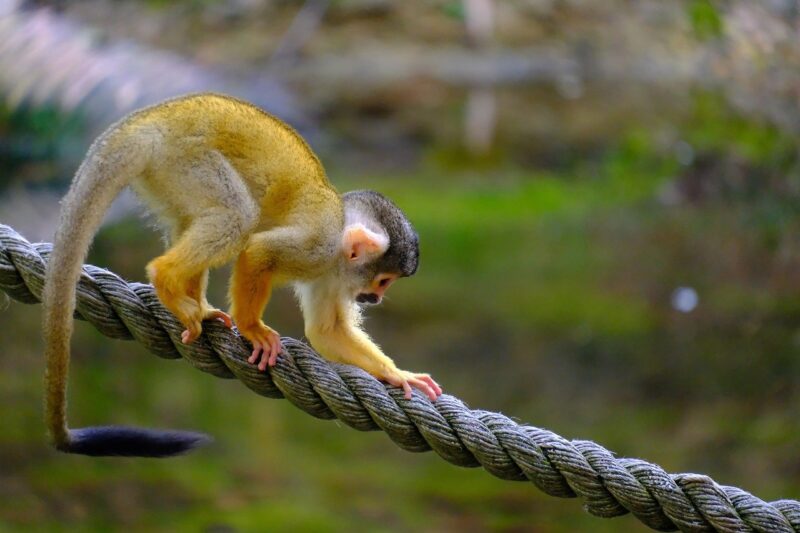Understanding Primate Behavior: Insights into Monkeys and Their Social Lives
November 14, 2024

Monkeys are not just fascinating creatures that take center stage in nature documentaries; they are complex beings with rich social lives and intricate behaviors. As a part of the primate family, their habits and interactions provide valuable insights into both animal and human behavior. In this comprehensive exploration, we will delve into the various aspects of monkey behavior, their social structures, communication methods, and what we can learn from them.
1. The Importance of Social Structure in Monkeys
Monkeys live in groups known as troops, which can range from a few individuals to hundreds, depending on the species. The social structure within these troops is essential for their survival and emotional well-being. Social hierarchies, which are often established through dominance and alliances, dictate access to resources like food, mating opportunities, and even safety from predators.
- Hierarchies: Most monkey troops are structured hierarchically, with alpha males leading the group. The alpha male gains status through aggression or strength, establishing his role as a protector and resource distributor. The presence of a strong leader can ensure the troop’s cohesion and stability.
- Female Alliances: In many species, females also establish their ranks and often band together to challenge the alpha male, reinforcing their social bonds and enhancing their reproductive success through collaboration.
Understanding social dynamics among monkeys provides a lens through which we can examine the role of cooperation, competition, and social bonds in animal behavior and its parallels in human society.
2. Communication: The Language of Monkeys
Communication in monkey troops is complex and sophisticated, involving various vocalizations, facial expressions, and body language. Each form of communication serves a distinct purpose, from alerting others to danger to expressing affection and establishing bonds.
- Vocalization: Monkeys have an extensive range of vocalizations, including calls that signify warnings, distress, or excitement. Specific tones and pitches can convey different meanings, which vary between species. For instance, alarm calls sounded in response to predators may indicate not only the type of threat but also its proximity.
- Facial Expressions: Facial gestures also play a crucial role in communication. A submissive monkey may display a grimace or expose its throat, while a confident individual might stand tall, showcasing its dominance. Observing these cues is essential for navigating social interactions within the troop.
By examining how monkeys use communication, researchers gain insights into the evolution of social behaviors and the significance of communication in the primate lineage.
3. Play Behavior and Its Role in Development
Play is a vital aspect of monkey behavior, particularly among younger individuals. Social play among juvenile monkeys serves several critical functions:
- Skill Acquisition: Through play, young monkeys engage in activities that mimic real-life challenges, honing skills they will need as adults, such as foraging, grooming, or socializing with peers.
- Social Bonds: Play fosters friendships and alliances, helping juveniles learn the importance of social networks within their troop. These bonds often extend into adulthood, aiding in their overall success and stability in the social hierarchy.
Play behavior thus highlights the significance of social interaction in shaping development, reflecting broader patterns seen across other primate species, including humans.
4. Tools and Problem Solving: Intelligence in Action
Studies have shown that many monkeys exhibit remarkable intelligence, particularly in their use of tools. Tool use is not limited to great apes; monkeys such as capuchins and macaques utilize various materials to solve problems and access food.
- Tool Use Examples: Capuchin monkeys have been observed using stones to crack open nuts, while macaques employ sticks to extract insects from tree bark. These behaviors indicate not only cognitive ability but also an understanding of cause and effect.
- Cultural Transmission: Tool use can vary between monkey populations, suggesting a form of cultural transmission. New generations learn how to use tools from observing their elders, reflecting a learning process akin to human culture.
Investigating tool use among monkeys opens up avenues for understanding how intelligence has evolved and its implications for social learning in other primate species, including humans.
5. Conservation: The Future of Monkeys in the Wild
Despite their fascinating behaviors and traits, monkeys face numerous threats in the wild due to habitat destruction, poaching, and climate change. Conservation efforts are crucial to ensuring the survival of these remarkable primates.
- Habitat Preservation: Protecting natural habitats is vital for monkey populations to thrive. Initiatives focusing on reforestation and the establishment of protected areas contribute to maintaining diverse ecosystems where monkeys can flourish.
- Education and Awareness: Promoting awareness about the ecological importance of monkeys and the threats they face can drive conservation efforts. Engaging local communities in conservation projects fosters coexistence and sustainable practices that protect both people and wildlife.
Abundant research on monkey behavior not only enhances our appreciation for their intricate social lives but also underscores the urgency of preserving their natural environments. By educating ourselves and advocating for monkeys, we can contribute positively to the future of our fellow primates.
Conclusion
In summary, the study of primate behavior offers profound insights into the lives of monkeys, their social structures, and the lessons they can teach us about cooperation, communication, and intelligence. As we continue to explore these captivating creatures, we uncover more about not only their world but also our own. By understanding and protecting these remarkable animals, we not only provide for their continued existence but enrich our understanding of ourselves in the grand tapestry of life on Earth.






